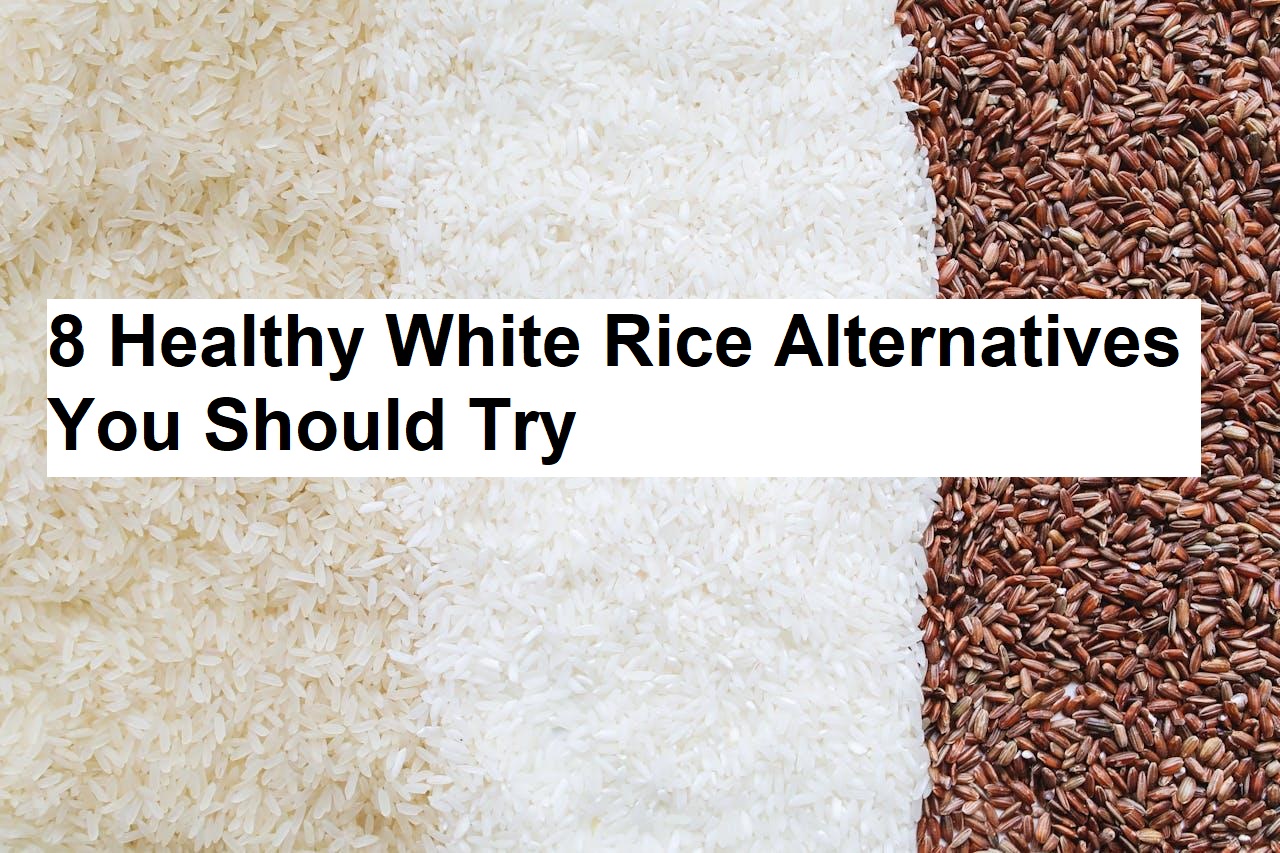8 Healthy White Rice Alternatives You Should Try
In many countries, the consumption of white rice is very common since it is a part of their daily meal plans. However, this refined grain lacks significant nutritional value and provides primarily empty calories. It is okay to consume white rice occasionally. However, there are also more beneficial white rice alternatives to include. This way, you will get more nutrients, such as fiber and protein.
1. Quinoa
Quinua is a nutrient-packed grain substitute that has become popular in the recent past. Originally grown in the Andean region (South America), the quinoa grain has no gluten. It is rich in plant-based protein as well as fiber, and antioxidants.
Cooking of quinoa is a breeze – cook it on the stove or even in a rice cooker. Quinoa has a mild, nutty flavor. It features a light texture, similar to rice, but with a bit more substance, which makes quinoa suitable for use in salads, pilaf and even in breakfast as an oatmeal replacement.
2. Brown Rice
It is a well-known whole grain that retains its nutrient-rich bran and germ layers, unlike its refined counterpart, white rice. This simple swap can go a long way in boosting the nutrition density of the healthy meals you take.
The nutritional value of brown rice is that it contains a lot of fiber as well as vitamins and minerals. It has a gentle taste like nuts and has a texture that is softer compared to white rice. To enrich the taste and softness of brown rice, you might replace water with vegetable or chicken broth when cooking brown rice.
3. Farro
It is an ancient grain that has been harvested for thousands of years. It has a top-notch taste, it is slightly nutty and has a nice chewy texture that can complement a wide range of dishes.
The grain is packed with fiber, protein, and other micronutrients such as magnesium and zinc. Farro should be enjoyed raw – it could be incorporated in salads, cooked and added to soups, or even taken as a plant-based side dish.
4. Bulgur
Bulgur is a type of whole wheat that has been parboiled and then dried. It is a type of grain that takes a short time to cook, and it is rich in fiber and low in fat.
Bulgur has a nutty taste and can be eaten in salads, and pilaf, as well as added as the foundation for veggie burgers or meatloaf. Bulgur is a nice substitute for white rice as it is quite versatile and can be prepared in a few minutes.
5. Barley
Barley is a nutrient-dense grain that comes in two main varieties: hulled and pearl. Hulled barley is a whole-grain form of barley, while pearl barley is barley with its outer bran layer removed to reduce cooking time.
Both types are good sources of fiber, antioxidants, and beta-glucan – a soluble fiber that may help with blood sugar control and heart health. Barley has a quite dense and crunchy feel in the mouth. It can be used in soups, stews, or as a side dish.
6. Wild Rice
Surprisingly, wild rice is not a type of rice at all but a semi-aquatic grass that grows in North America. It has a unique taste that somewhat reminds nuts and has a unique texture that is not similar to other types of rice.
Wild rice is packed with proteins, antioxidants, and several minerals such as zinc and manganese. It goes well with other ingredients and can be used in pilaf recipes, salads, or as a base for stuffing.
7. Cauliflower Rice
Cauliflower rice is an ace choice for anyone looking for a low-carb substitute for white rice. It is prepared by processing fresh cauliflower florets until they reach the size and texture of rice grains.
Cauliflower rice can be eaten in different meals such as stir fry, pilaf, sushi rolls and even as a substitute for the traditional fried rice. It is a low-calorie, low-glycemic index food that can be used as a healthy substitute for white rice.
8. Freekeh
Freekeh is a natural grain that has recently been introduced in the market as a healthy and tasty substitute for rice. Freekeh comes from the Middle East and is made from green wheat that is cut when it is still soft and then roasted. This gives the grain a smoky taste and a slightly crunchy texture.
Though freekeh is one of the oldest grains in the world, it is quite versatile and can be incorporated into many recipes. It can be used as a side dish, mixed in salads or soups, or as the foundation for pilafs or grain bowls. Freekeh has a subtle, nutty, and smoky taste that blends well with vegetables, meat, and herbs.
Conclusion
Introducing other grains can be a game-changing approach to diversify your meal plan. While white rice can be consumed in limited amounts, it is better to include healthier grains such as quinoa, brown rice, farro, bulgur, barley, wild rice, and cauliflower rice.Remember, a balanced diet means that no foods should dominate the other. Do not restrict yourself to using only a particular grain and try out other grains to learn different tastes and feelings on your palate. By using these 8 nutritious rice substitutes, you can get the necessary carbs as well as vitamins and minerals.


